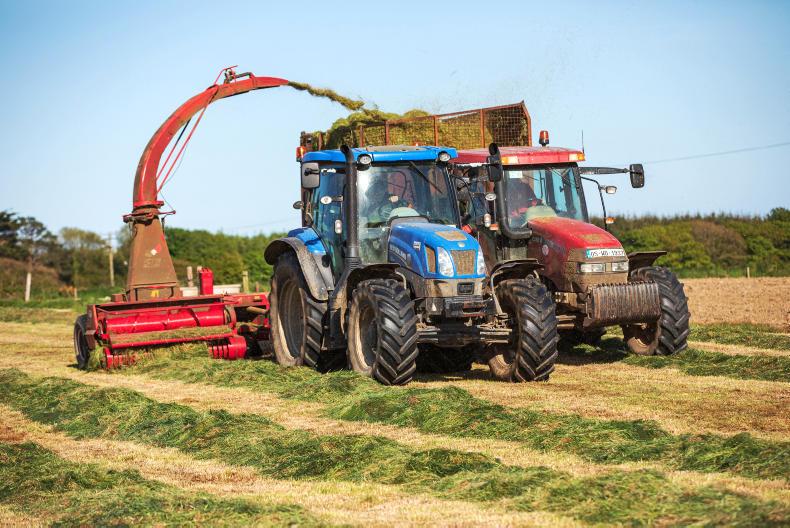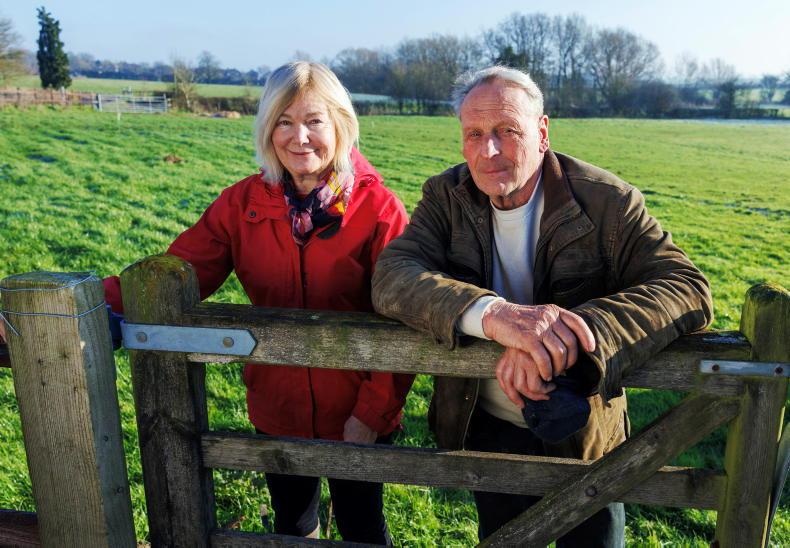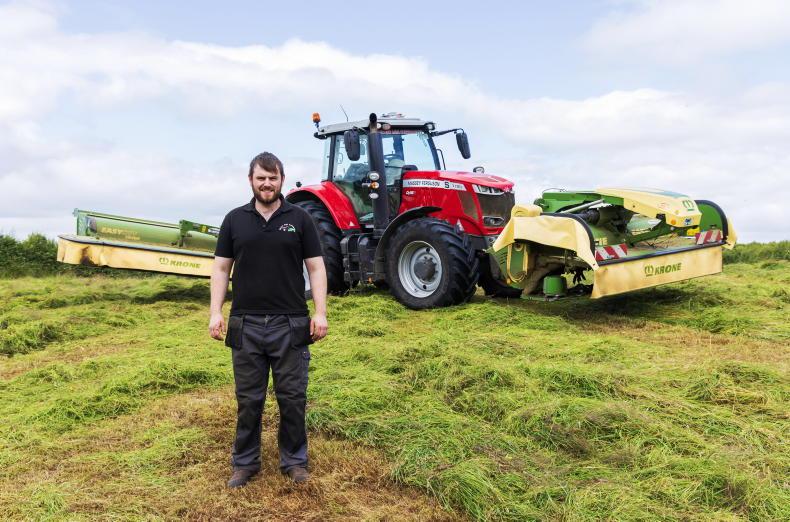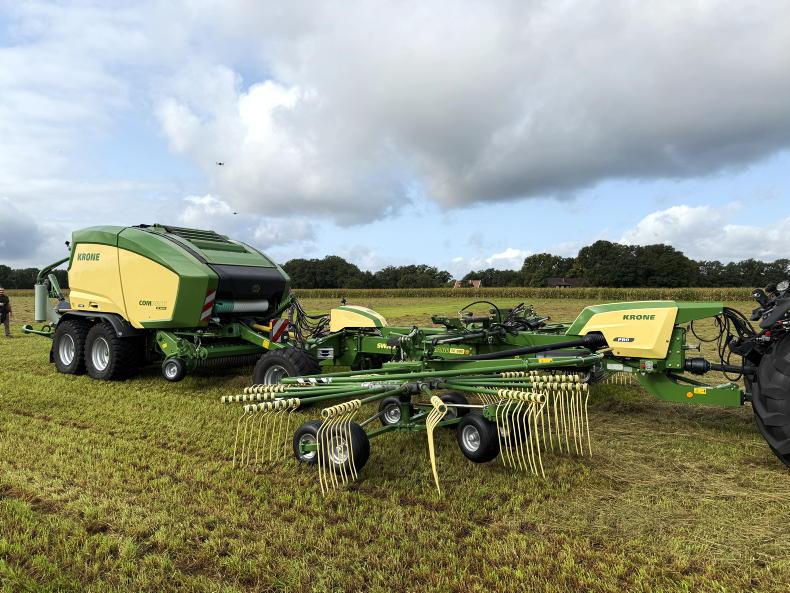The silage season is under way, with some farmers taking advantage of the recent dry spell to harvest grass in early to mid-May. But for beef farmers, most silage will be harvested in June for a number of reasons. These include later fertiliser applications and closing dates on heavier land, lower than average grass growth over the past month and targeting bigger yields of fodder.
Early heading dates
Parts of the country are still suffering from a soil moisture deficit and this will cause grass to head out earlier than normal.
Once grass heads out, feed value will quickly decline. For every week that cutting date is delayed once seed heads emerge, dry matter digestibility (DMD) falls by around three units.
Feed value
This drop in feed value is roughly the equivalent of 0.75kg of a standard 16% ration. Therefore, if cutting date is delayed by two weeks after grass heads out, an additional 1.5kg/day of concentrate would have to be fed to stores to match the feed value of silage harvested a fortnight earlier.
Over a 150-day winter period, this would amount to an additional 9t of concentrate being fed to 40 store cattle. At a ration price of €250/t, this amount to €2,250 in additional feed costs.
Balance
There is a balance to strike between feed quality and grass yield. Once grass starts heading out, growth rates start tailing off, so there is no major yield benefit from delaying cutting date. As a compromise, target the cutting date once seed heads start to emerge on the standing sward.
To boost reserves of high-quality silage that can be targeted to stores, finishing cattle and autumn-calving cows, aim to take out surplus grass from the grazing platform as baled silage. These bales can be stacked separately and marked for priority cattle. In addition, aim for a second cut of good-quality silage in early August.
Weather
While you can plan ahead for silage, the weather ultimately dictates if these plans will be realised.
Last year, there was a similar dry period in May. Yet June was wet and left many farmers with problems harvesting first cut.
Give careful thought as to when you aim to make silage. Outlined are some steps that will help improve silage quality this year.
Try to target cutting date once seed heads start to appear on the sward. This means you will need to walk the sward and physically check the grass.
Alternatively, check the base of the sward. If grass is starting to turn white at the base, then the sward is dying back and growth rates will quickly tail off. Therefore, aim to cut as soon as possible. There is no point in delaying cutting as there will be little increase in yield.
Delaying cutting will only leave a white aftermath which is slow to recover, pushing second cut back to late August.
2
If I cut early, what about residual nitrogen in grass?
As a rule of thumb, grass will use up two units of nitrogen per day. But as growth rates increase during May, grass can use three to four units daily.
However, if you wish to cut grass a week earlier than planned, you will need to wilt grass before ensiling.
Raising the dry matter of grass will give a stable fermentation.
3
Mow grass in the afternoon
Where a farmer has their own silage equipment, mowing grass from lunchtime onwards is best.
Dry matter is always higher in the afternoon, meaning grass sugars are at peak levels. This may not be an option when grass is being harvested by a contractor.
Once mowed, the aim should be to wilt grass for a 24- to 36-hour period to increase dry matter and encourage a stable fermentation.
Ideally, you want a dry matter of 30% to 35%. Leaving grass to wilt for longer has little advantage.
If anything, it can increase field losses when harvesting, as grass tends to shatter more.
5 Don’t chop grass too short
Chop length should be at least the width of mature cattle’s muzzle, or around five to six inches. Grass that is over-chopped is hard to compact when ensiling, making it harder to expel air.
Long grass is harder to handle when fed out. This increases waste as cattle tend to pull fodder into pens when exiting feed barriers.
Buck-raking is probably the most important role at silage time. Fill the clamp evenly and roll between loads. The weight of the machine filling the clamp is effective at compressing grass below the tyres to a depth of 30cm to 45cm. Around 25% of grass in a clamp is in contact with the side walls, as well as the top of the clamp. These areas are usually where waste accumulates.
Taking time to compact grass in these areas will reduce this waste.
Once the pit has been rolled, get the cover on as soon as possible to start the fermentation process. Grass will start heating as it is ensiled, and the longer the clamp is left uncovered, the more waste silage you will have.
When working with bales, make sure the baler is set to pack grass as tight as possible. Bales with a higher density of grass hold their shape better once wrapped and stacked.
This also reduces the amount of plastic used to wrap bales, thereby reducing waste material once opened.
Wrap bales as quickly as possible after baling.
This stops bales from sagging and improves fermentation.
When stacking bales, there is the option to mark bales with paint to denote those with higher-quality grass.
These bales are easily identified and can be targeted to high-priority cattle, such as finishing stock or autumn-calving cows.
When stacking bales, a single row is best but requires more space. Two rows of bales reduce stacking space, but require dense bales to prevent sagging. Avoid stacking more than two rows high.
Silage season is a dangerous time on farms with so much machinery at work.
Always take safety precautions when working with mowers and harvesting machinery, ensuring machines have stopped when carrying out repairs.
Read more
Watch: Thrive update – getting grass right
BETTER Farm NI: cost savings with high quality silage in bull beef systems
The silage season is under way, with some farmers taking advantage of the recent dry spell to harvest grass in early to mid-May. But for beef farmers, most silage will be harvested in June for a number of reasons. These include later fertiliser applications and closing dates on heavier land, lower than average grass growth over the past month and targeting bigger yields of fodder.
Early heading dates
Parts of the country are still suffering from a soil moisture deficit and this will cause grass to head out earlier than normal.
Once grass heads out, feed value will quickly decline. For every week that cutting date is delayed once seed heads emerge, dry matter digestibility (DMD) falls by around three units.
Feed value
This drop in feed value is roughly the equivalent of 0.75kg of a standard 16% ration. Therefore, if cutting date is delayed by two weeks after grass heads out, an additional 1.5kg/day of concentrate would have to be fed to stores to match the feed value of silage harvested a fortnight earlier.
Over a 150-day winter period, this would amount to an additional 9t of concentrate being fed to 40 store cattle. At a ration price of €250/t, this amount to €2,250 in additional feed costs.
Balance
There is a balance to strike between feed quality and grass yield. Once grass starts heading out, growth rates start tailing off, so there is no major yield benefit from delaying cutting date. As a compromise, target the cutting date once seed heads start to emerge on the standing sward.
To boost reserves of high-quality silage that can be targeted to stores, finishing cattle and autumn-calving cows, aim to take out surplus grass from the grazing platform as baled silage. These bales can be stacked separately and marked for priority cattle. In addition, aim for a second cut of good-quality silage in early August.
Weather
While you can plan ahead for silage, the weather ultimately dictates if these plans will be realised.
Last year, there was a similar dry period in May. Yet June was wet and left many farmers with problems harvesting first cut.
Give careful thought as to when you aim to make silage. Outlined are some steps that will help improve silage quality this year.
Try to target cutting date once seed heads start to appear on the sward. This means you will need to walk the sward and physically check the grass.
Alternatively, check the base of the sward. If grass is starting to turn white at the base, then the sward is dying back and growth rates will quickly tail off. Therefore, aim to cut as soon as possible. There is no point in delaying cutting as there will be little increase in yield.
Delaying cutting will only leave a white aftermath which is slow to recover, pushing second cut back to late August.
2
If I cut early, what about residual nitrogen in grass?
As a rule of thumb, grass will use up two units of nitrogen per day. But as growth rates increase during May, grass can use three to four units daily.
However, if you wish to cut grass a week earlier than planned, you will need to wilt grass before ensiling.
Raising the dry matter of grass will give a stable fermentation.
3
Mow grass in the afternoon
Where a farmer has their own silage equipment, mowing grass from lunchtime onwards is best.
Dry matter is always higher in the afternoon, meaning grass sugars are at peak levels. This may not be an option when grass is being harvested by a contractor.
Once mowed, the aim should be to wilt grass for a 24- to 36-hour period to increase dry matter and encourage a stable fermentation.
Ideally, you want a dry matter of 30% to 35%. Leaving grass to wilt for longer has little advantage.
If anything, it can increase field losses when harvesting, as grass tends to shatter more.
5 Don’t chop grass too short
Chop length should be at least the width of mature cattle’s muzzle, or around five to six inches. Grass that is over-chopped is hard to compact when ensiling, making it harder to expel air.
Long grass is harder to handle when fed out. This increases waste as cattle tend to pull fodder into pens when exiting feed barriers.
Buck-raking is probably the most important role at silage time. Fill the clamp evenly and roll between loads. The weight of the machine filling the clamp is effective at compressing grass below the tyres to a depth of 30cm to 45cm. Around 25% of grass in a clamp is in contact with the side walls, as well as the top of the clamp. These areas are usually where waste accumulates.
Taking time to compact grass in these areas will reduce this waste.
Once the pit has been rolled, get the cover on as soon as possible to start the fermentation process. Grass will start heating as it is ensiled, and the longer the clamp is left uncovered, the more waste silage you will have.
When working with bales, make sure the baler is set to pack grass as tight as possible. Bales with a higher density of grass hold their shape better once wrapped and stacked.
This also reduces the amount of plastic used to wrap bales, thereby reducing waste material once opened.
Wrap bales as quickly as possible after baling.
This stops bales from sagging and improves fermentation.
When stacking bales, there is the option to mark bales with paint to denote those with higher-quality grass.
These bales are easily identified and can be targeted to high-priority cattle, such as finishing stock or autumn-calving cows.
When stacking bales, a single row is best but requires more space. Two rows of bales reduce stacking space, but require dense bales to prevent sagging. Avoid stacking more than two rows high.
Silage season is a dangerous time on farms with so much machinery at work.
Always take safety precautions when working with mowers and harvesting machinery, ensuring machines have stopped when carrying out repairs.
Read more
Watch: Thrive update – getting grass right
BETTER Farm NI: cost savings with high quality silage in bull beef systems










SHARING OPTIONS